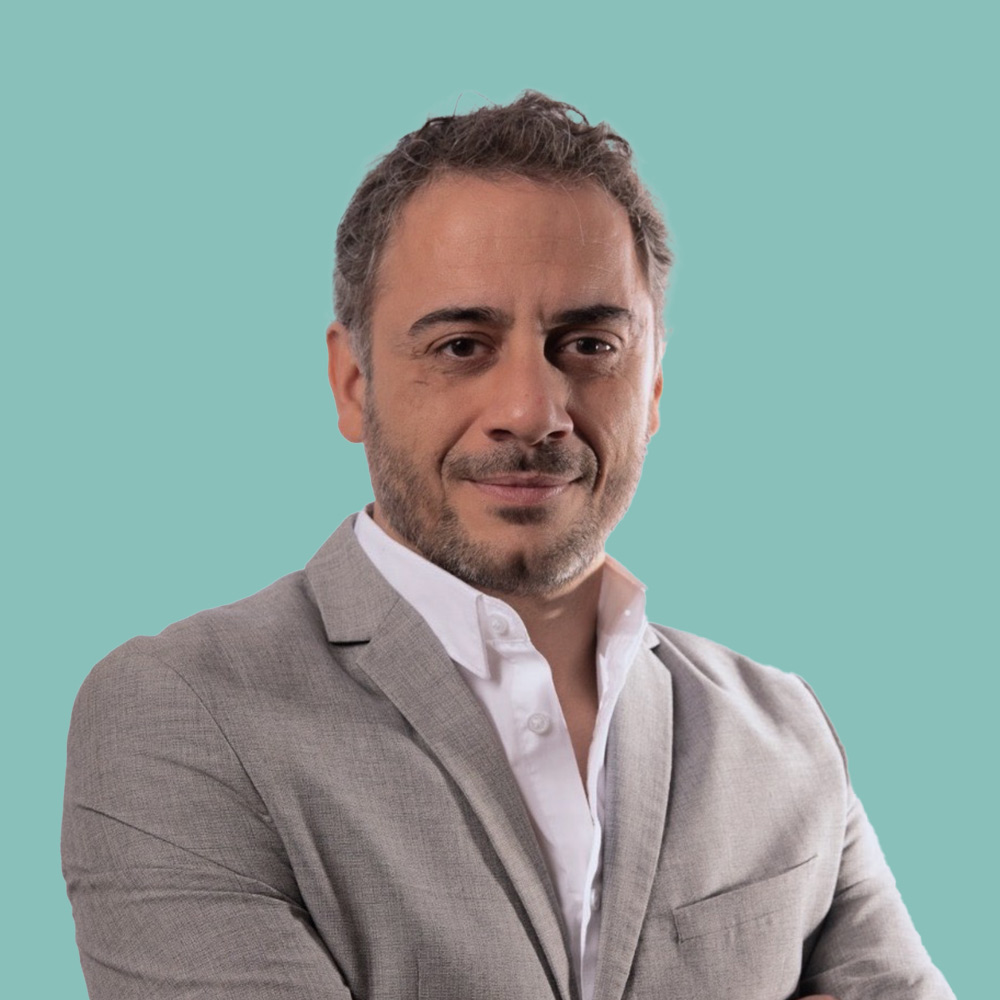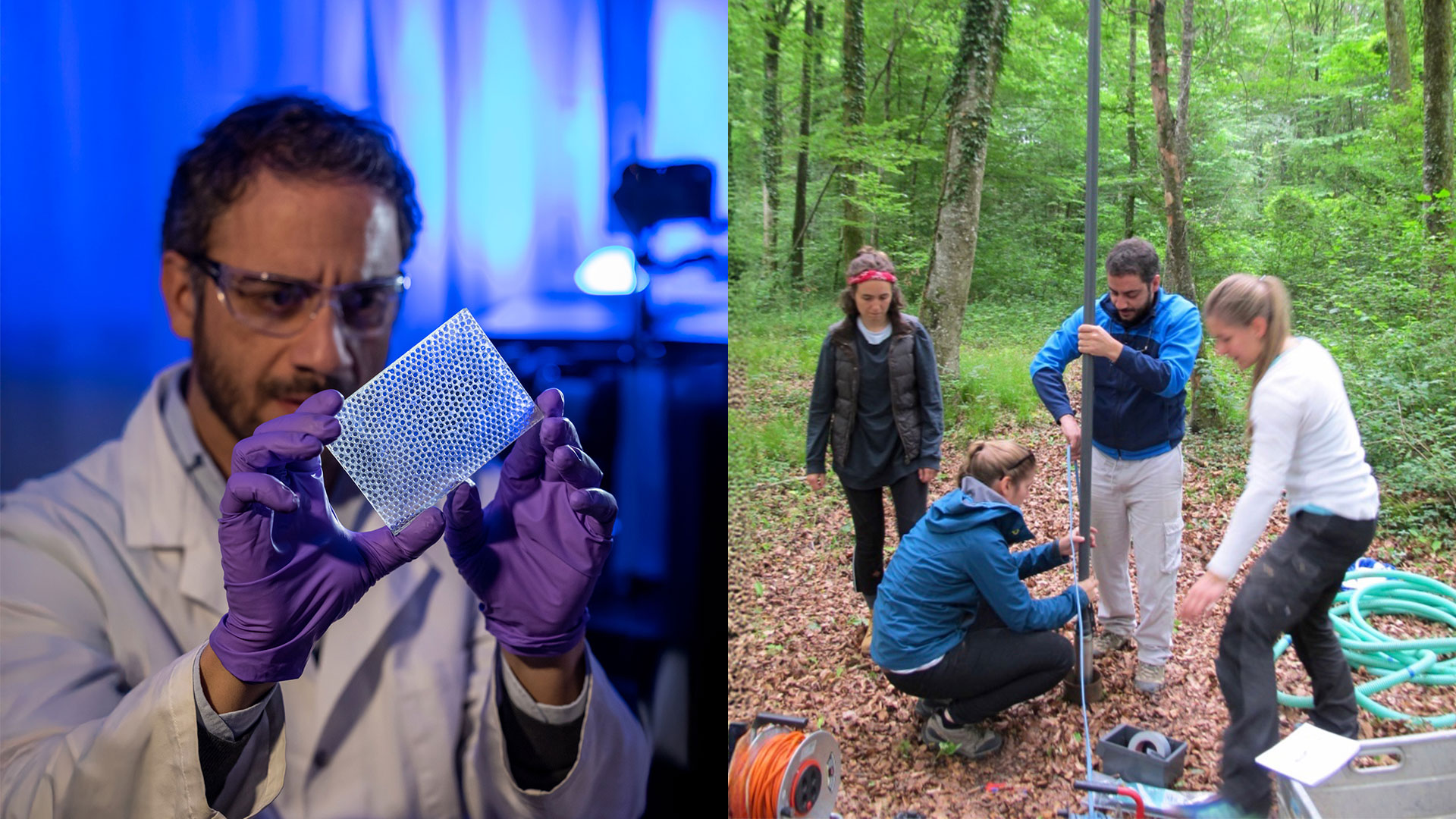Protecting our groundwater
Joaquin Jiménez-Martínez combines experimental work with advanced modeling to explore how water moves and interacts with its environment. With expertise spanning from micrometer-scale pore processes to field-scale hydrology, his research is dedicated to understanding and protecting our underground reservoirs. On the occasion of his appointment as Adjunct Professor, we asked what currently drives him in research and teaching.

Professor Jiménez-Martínez, congratulations on your promotion to Adjunct Professor at ETH Zurich! What are your current research interests?
Thank you very much. It is a great honor to be a professor at one of the most prestigious universities in the world. My research focuses on groundwater hydrology – essentially understanding how water moves and interacts with its surroundings beneath the Earth’s surface. Specifically, I study the movement of masses, chemical reactions, and the behavior of microbes in porous and fractured media.
My group, Subsurface Environmental Processes (Eawag – ETH Zurich), tackles these challenges with experiments ranging from the micrometer to the field scale. By combining these experiments with theoretical and computational models, we aim to elucidate the mechanisms that drive small-scale processes. This knowledge is essential to address the larger challenge of protecting groundwater resources from pollution caused by human activities.
What can you tell us about the impact of your research on society?
Underground water reserves – often called natural water reservoirs – are vital resources for life. In Switzerland, for instance, they provide up to 80% of the drinking water. But their importance goes beyond drinking water; they also support food production and energy storage.
Our research aims to protect these critical resources while using them sustainably. For instance, we create tools to support water management in agricultural areas, helping policymakers and farmers adapt practices that safeguard underground water supplies.
We also explore the environmental impacts of innovative technologies like shallow geothermal energy, which supports renewable energy transitions, and carbon dioxide (CO2) storage, a method to combat climate change by injecting CO2 deep underground. By understanding how underground systems function, we help ensure these solutions are effective, safe, and environmentally responsible.
Where did you work before coming to ETH?
Since 2016, I have been a Group Leader at Eawag and a Lecturer at D-BAUG. Before joining the ETH domain, I was a Postdoc at Los Alamos National Laboratory in the USA – yes, the place that recently became popular again thanks to the acclaimed film “Oppenheimer”. There, I had the opportunity to work on geological CO2 sequestration, a very topical subject in Switzerland given the current efforts to reduce emissions and atmospheric concentrations. After graduating in Geological Sciences from the University of Granada and obtaining the Certificate of Advanced Studies in Geotechnical Engineering from the Technical University of Catalonia (both in Spain), I obtained my PhD in Subsurface Hydrology from the same university in 2010. I strengthened my research training as a postdoctoral fellow at the CNRS-University of Rennes 1 in France from 2010 to 2014. It was in Rennes that my interest in pore-scale (micrometer) processes in the context of subsurface environments was awakened.

What courses are you most excited about teaching at ETH?
I enjoy all my teaching! I am responsible for three groundwater-related courses. I teach groundwater hydrology at both the undergraduate and graduate level. In my undergraduate course, students are introduced to the fundamental processes that drive groundwater systems, connecting theory to practical examples such as groundwater exploitation, aquifer contamination, and remediation. The graduate-level course is particularly unique in that it focuses on the construction of a numerical groundwater model entirely from scratch. This hands-on approach equips engineering students with the skills to evaluate water resource management strategies, address groundwater remediation, and assess the impact of new infrastructure on groundwater systems. Of these, the groundwater field course excites me the most. It has been a source of inspiration, especially in identifying and overcoming learning bottlenecks through active learning strategies. These insights even sparked an international dialogue, culminating in a external page recently published article in a leading journal in the field.
What do you do if you have a few minutes to spare?
In my spare time, I enjoy sports and spending time with friends. I am a regular runner and have recently added cycling to my routine. I am also a passionate music lover and occasionally take the time to play my clarinet.
Do you have a general philosophy or motto you try to live by?
“And why not?” These kinds of questions have always fuelled my curiosity. It is very important to try not to have doubts about what would have happened. This applies to academic life, but also to life in general.
What advice would you give to students who are just starting out in (environmental) engineering?
I would advise our students not to be shy, to get involved in the life of the department and discover the wide range of opportunities to interact and learn. This will allow them to discover their true passion for engineering. I certainly consider this to be key to professional success as well as personally rewarding.
What book, podcast or movie related to your research field would you recommend to students and colleagues?
I always recommend the film “Erin Brockovich” to my students. It’s based on the true story of a major groundwater contamination case in California, USA, and the legal battle that followed. In 1993, Erin Brockovich, a determined paralegal, began investigating the health effects caused by toxic chemicals that had leached into the city's water supply. It's a compelling story about the importance of environmental protection and, in the case of contamination, the need for environmental engineering to clean it up.